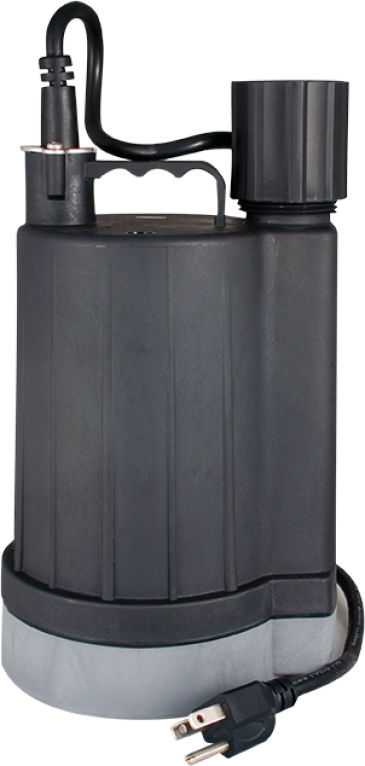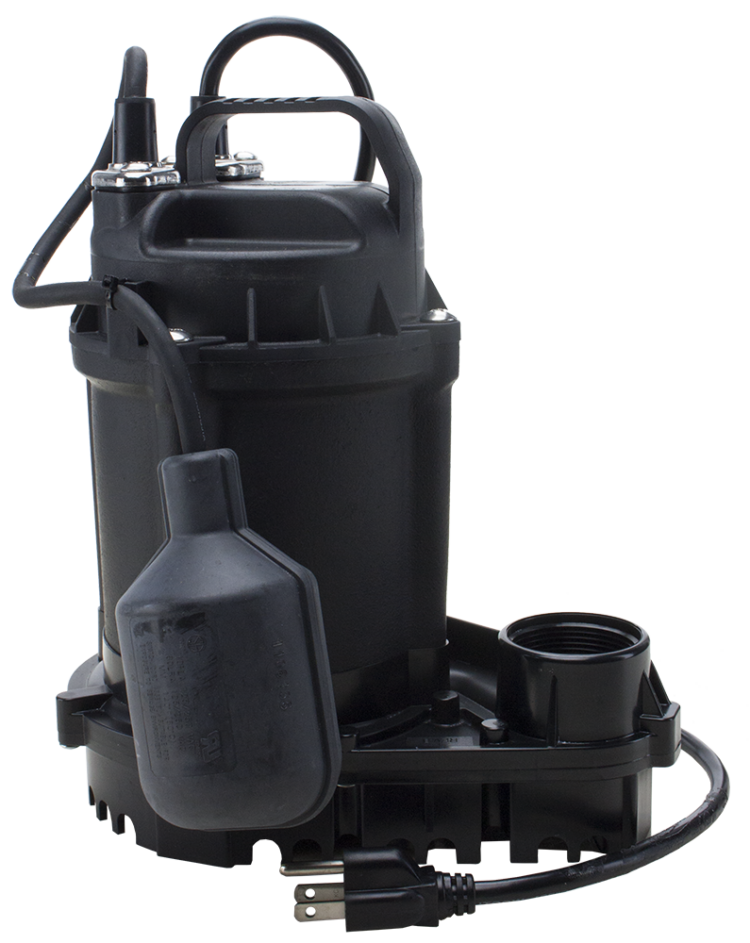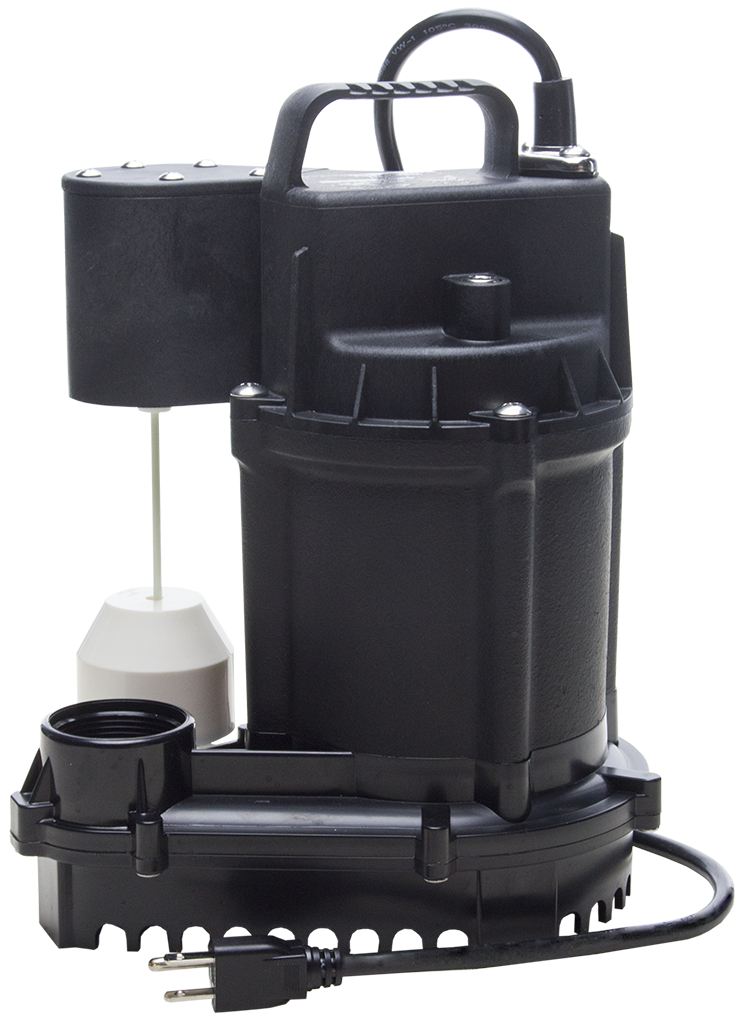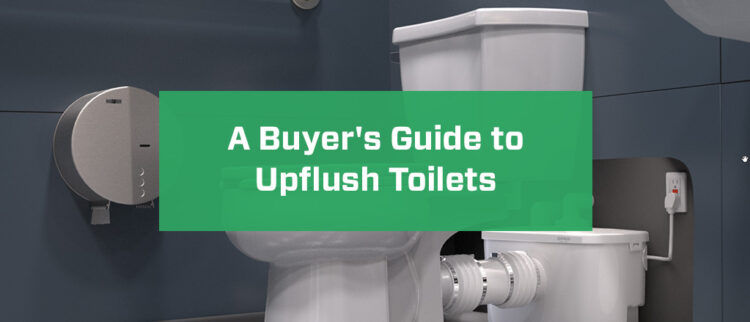As a homeowner or residential contractor, you know how damaging water can be. Whether it’s due to heavy rain that caused extensive flooding or cracked gutters that aren’t effectively redirecting water away from your home, water damage can lead to extensive and costly repairs.
No matter the cause, water damage is unsightly. It causes difficult-to-remove stains and contributes to mold and mildew growth. Entry points like openings, honeycombing and cove joints can also allow water to seep in and compromise a home’s structural integrity through issues ranging from fungus to a compromised foundation.
Two common solutions for removing and preventing water damage are sump pumps and utility pumps. While both are types of pumps, they are designed for different applications. Sump pumps are used to remove water from basements or crawl spaces, whereas utility pumps are designed for a variety of water transfer tasks. Discover how these pumps can keep your home dry and protected.
What Are the Functions of Sump Pumps?
Sump pumps are especially designed to protect your home by moving away groundwater which could cause extensive — and expensive — damage. When the water reaches a certain level, the float switch will activate and start draining and redirecting water away from your home.
This is especially beneficial for homeowners who live in an area susceptible to heavy rain, snow or flooding. Along with aiding in water removal, sump pumps help prevent sewage backups, improve indoor air quality, protect your home’s foundation, and reduce the chances of mold, mildew, and fungus growth.
Sump pumps can be either submersible, which means they are installed in the sump pit, or pedestal, which means they are mounted above the pit. They can be run by electricity, water or a battery.
Depending on your needs, there are different types of sump pumps available, with a few stand-out options including:
- Cast-iron sump pumps: Designed for both residential and commercial applications, this style of sump pump offers long-lasting reliability. With features like rugged cast iron motor housing and stainless steel hardware, you can feel confident knowing your new pump can withstand all kinds of water challenges.
- Column sump pumps: These sump pumps offer efficient drainage with a stable and durable design. With a top-suction strainer, this style of pump prevents clogs by filtering out debris.
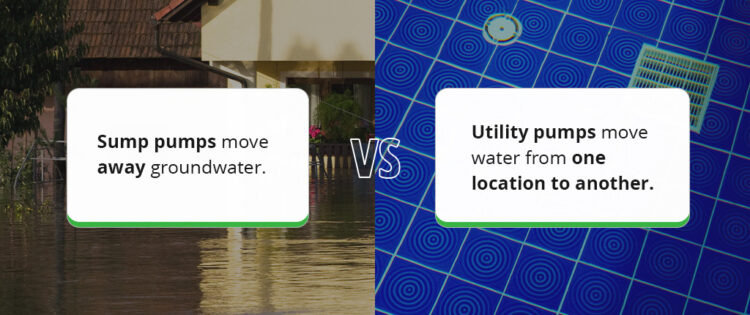
What Are the Functions of Utility Pumps?
Utility pumps also remove water, but they are better suited for more general water transfer tasks like draining pools or moving water from one location to another. These pumps are versatile, allowing you to easily and safely transfer either clean or dirty water. They work well for routine tasks like rainwater distribution or pond maintenance, though you can also use them for emergency situations when you need to quickly and safely get water out of an area like your basement.
One of the biggest benefits of utility pumps is how versatile they are. They don’t require fixed installation, allowing you to use and move them as needed. They are ready to use any time you need to handle unwanted water, either indoors or outdoors, making them especially useful for temporary jobs.
Depending on the type of job and the kinds of features you need, you can choose from various types of utility pumps, including:
- Regular
- Submersible
- Automatic
- Deep
- Utility
Key Differences Between Sump Pumps and Utility Pumps
There are a few main differences between a sump pump and a utility pump, which you’ll want to keep in mind as you explore your options:
- Design and construction: Each type of pump features a distinct design and construction to handle different environments. Sump pumps are usually sturdier to keep running in wet environments, while utility pumps are designed for lighter tasks.
- Water handling: Sump pumps are specially designed to remove groundwater or water that collects around your home’s foundation. Meanwhile, utility pumps are capable of handling clean and dirty water.
- Installation: Each type of pump has different installation requirements. Utility pumps are usually a bit more flexible and can be installed and used in different areas. Sump pumps require a sump pit.
- Costs: Depending on which pump you choose, the initial costs and upkeep can vary. Typically, you can expect to pay more for a sump pump because of the different installation needs.
Selecting the Right Pump for Your Specific Needs
When it comes to choosing either a sump pump or a utility pump, homeowners and residential contractors should think about the following factors based on their needs:
- The source and type of water problem: One of the first things you want to do is assess the water issue. Determine where the water is coming from and whether you’re dealing with flooding or a general transfer. This is one of the key determining factors for choosing either a sump or utility pump.
- Capacity requirements: You also need to consider the capacity, which is how much water the pump needs to be moved. Capacity is measured in gallons per minute or hour. Typically, sump pumps are capable of handling higher capacity ratings.
- Power sources: The type of pump you choose may have different voltages. Determine if you need a manual or battery-powered pump and if your outlets can adequately and safely support your choice.
If you’re unsure, it’s always best to consult with a professional pump system supplier or Star customer support. They’ll be able to go over your specific situation and help you choose the best model.
Find the Right Pump for Your Water Movement Needs With Star Water Systems
For more than 150 years, Star Water Systems has been providing innovative pump solutions. Whether you’re looking for a sump pump or a utility pump, you can trust that our solutions are built to effectively handle all kinds of water movement needs with efficiency and dependability. Every pump we offer is high-quality and built to perform. You can feel confident knowing your new sump or utility pump will keep your home and property protected from flooding and water damage.
If you can’t decide which type or model would work best for your situation, our team is here to help you choose from our comprehensive line of sump and utility pumps. We have decades of experience and are here to assist with your flood prevention and backup needs.
Browse our pump solutions today and find a distributor near you to get started.




